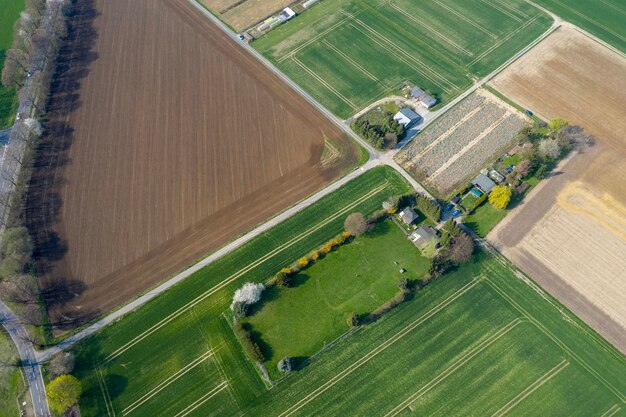Discover the Path to Securing a USDA Loan for Land
Imagine unlocking the potential of underutilized rural areas to create your dream home, retirement sanctuary, or agricultural enterprise. USDA loans offer a promising solution for those eager to step into the world of land ownership in America's vast rural landscapes. Here's your guide to navigating the process and successfully obtaining a USDA loan for land.
Understanding USDA Loans
USDA loans are designed to promote rural development by offering qualified applicants favorable loan terms. Guaranteed by the U.S. Department of Agriculture, these loans can be used to purchase land, build homes, or even improve existing properties. By simplifying access to financing, the USDA aids in sustaining rural communities and economies.
Key Benefits of USDA Loans
- Zero Down Payment: USDA loans often require no down payment, lightening the financial load for aspiring landowners.
- Low Interest Rates: The interest rates on USDA loans are typically lower than those of traditional loans, translating to long-term savings.
- Flexible Credit Requirements: Applicants with less-than-perfect credit scores may still qualify, making these loans more accessible.
Steps to Getting a USDA Loan for Land
1. Check Your Eligibility
Before diving into applications, verify that both your financial profile and the land you're interested in are eligible. USDA loans are typically targeted at low to moderate-income individuals or families. The land must be located in a designated rural area, as defined by the USDA.
2. Gather Necessary Documentation
Prepare your financial documents, including tax returns, pay stubs, bank statements, and any information regarding existing debts. Lenders will assess these documents to determine your ability to repay the loan.
3. Connect with an Approved USDA Lender
Engage with a lender approved by the USDA to discuss your options. They will guide you through the specifics of the application process and clarify any requirements related to USDA loans.
4. Submit Your Application
Complete the application with your lender's assistance, ensuring accuracy to avoid delays. Be ready to explain your intended use of the land, as this can impact your eligibility for the loan.
5. Await Approval and Follow-Up
Once your application is submitted, the USDA and your lender will review it. If approved, you'll receive a commitment to the loan, subject to certain conditions being met.
Beyond USDA Loans: Exploring Additional Financial Opportunities
While USDA loans provide an excellent avenue for purchasing land, you may find other government aid programs and financial assistance options valuable:
- Educational Grants: If you're buying land for educational or community-based purposes, explore grants available for such initiatives.
- Credit Solutions: Consider leveraging tailored credit solutions to strengthen your financial standing before applying for a loan.
- Debt Relief Options: Managing any outstanding debts can improve your chances of loan approval and offer a clearer financial path.
Balancing these resources can set you on track for greater financial health and preparedness for land ownership.
Financial Assistance and Tools at a Glance
- 🌾 USDA Loans - Ideal for rural land purchases
- 🎓 Educational Grants - Support for community and educational projects
- 💳 Credit Counseling - Strategies to improve credit scores
- 💡 Energy-Efficiency Grants - Funding to enhance property sustainability
- 🏡 Down Payment Assistance Programs - Aid for first-time buyers
- 🗂️ Debt Management Plans - Structured repayment plans for existing debts
Securing a USDA loan for land can be transformative, catalyzing new opportunities in rural development while solidifying your financial future. As you embark on this journey, consider the broader array of financial tools available to enhance your purchasing power and investment in your dreamed rural landscape.
